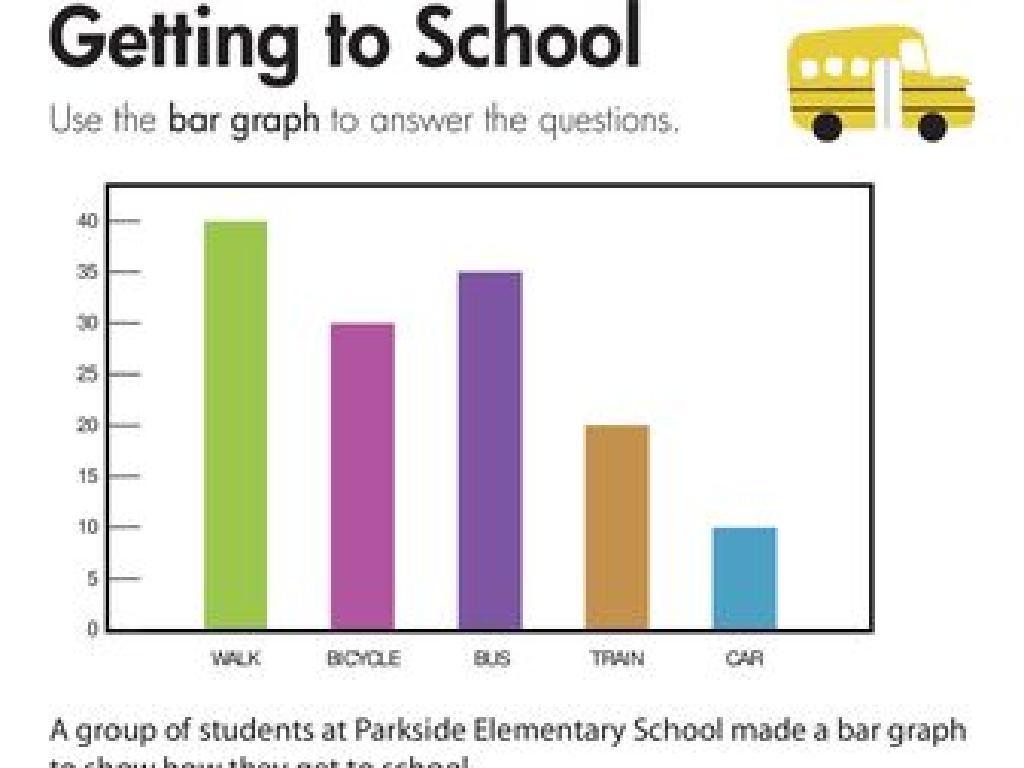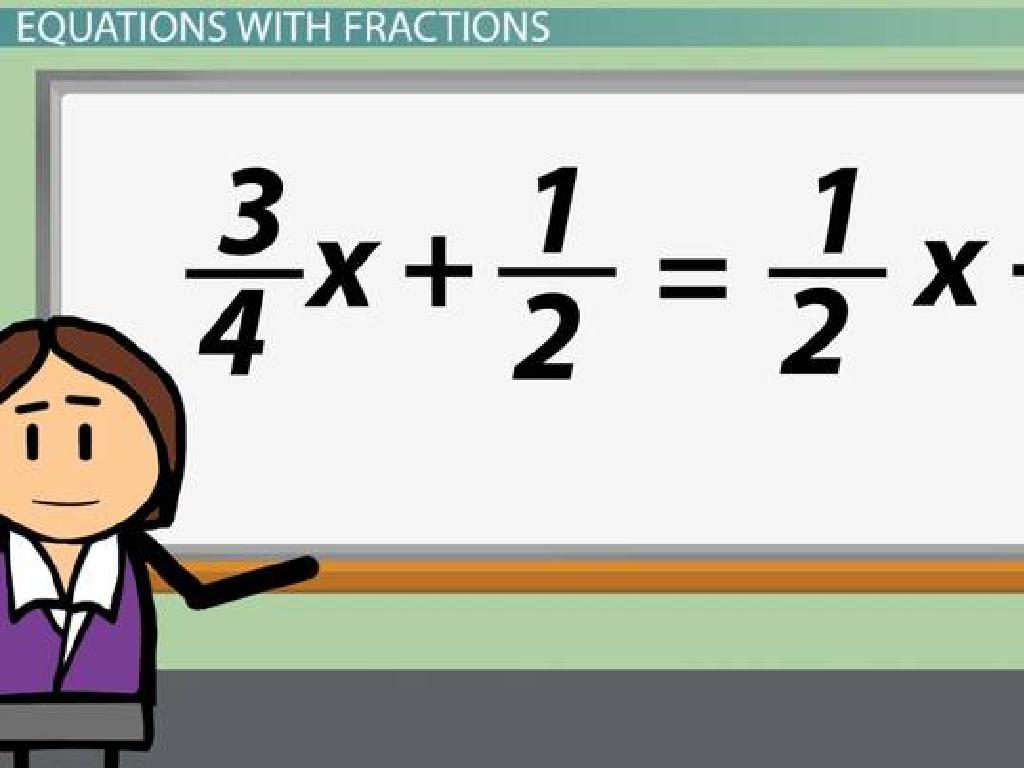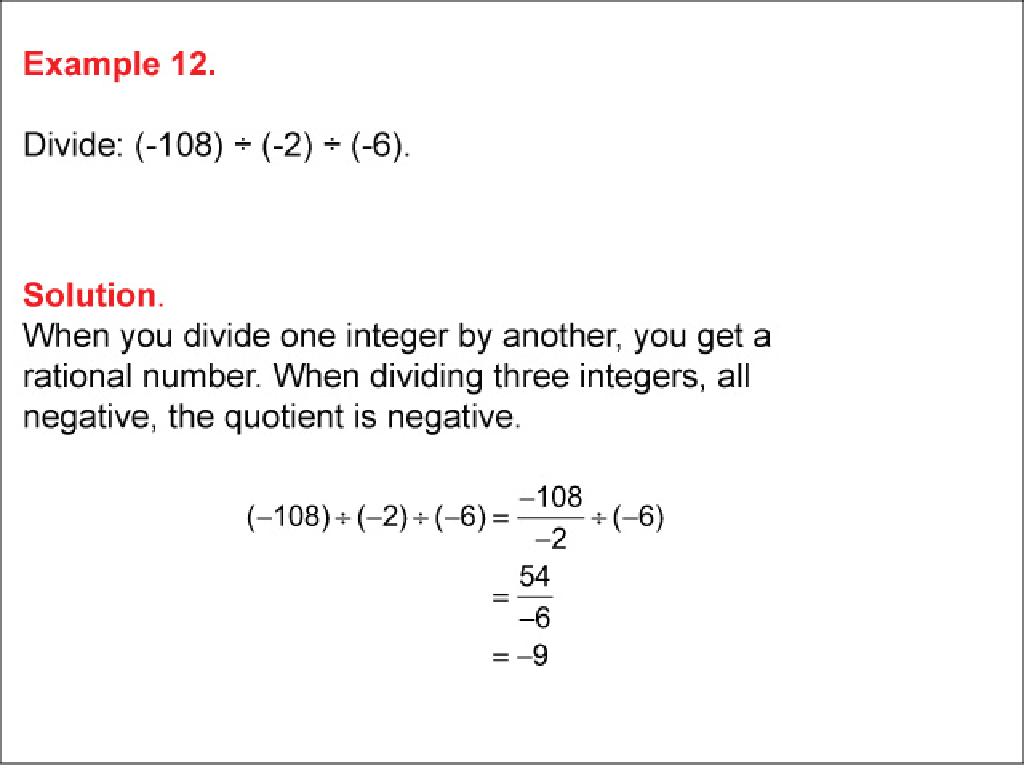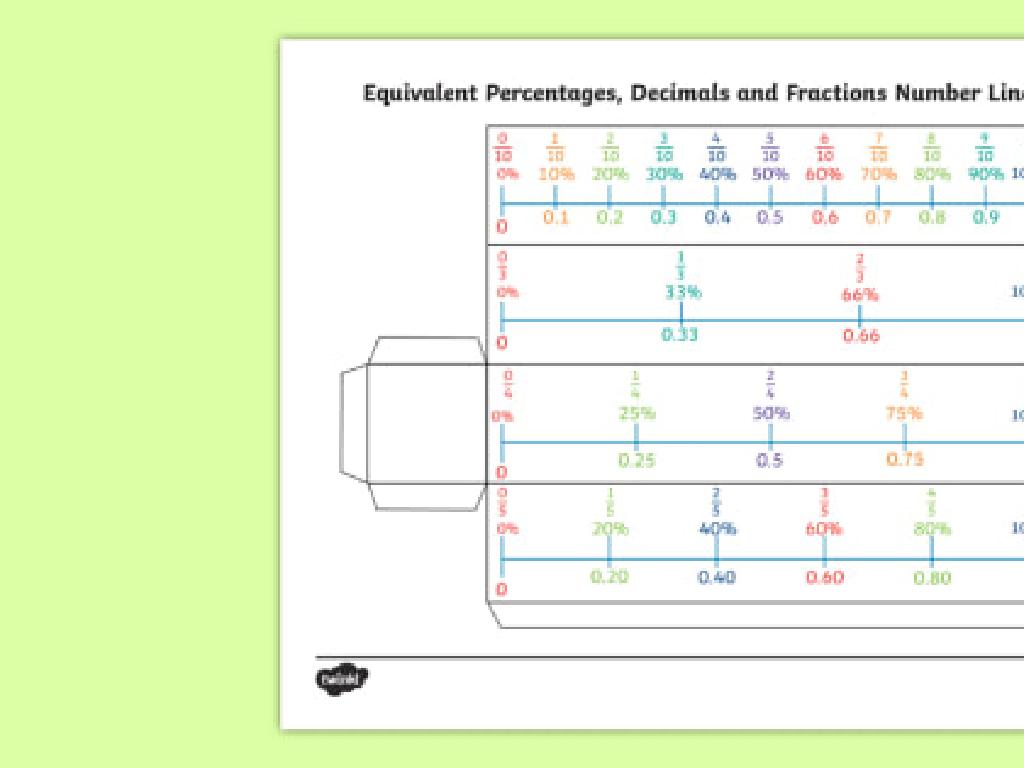Subject-Verb Agreement
Subject: Language arts
Grade: Third grade
Topic: Verb Types
Please LOG IN to download the presentation. Access is available to registered users only.
View More Content
Today’s Adventure: Verb Types!
– What is a verb?
– Action words in sentences, like ‘run’, ‘think’, ‘eat’
– Subjects join with verbs
– The subject is who or what the sentence is about
– Verbs must agree with subjects
– Singular subjects need singular verbs; plural subjects need plural verbs
– Let’s practice matching!
|
This slide introduces the concept of verbs and subject-verb agreement to third-grade students. Begin by explaining what a verb is, using simple and relatable actions. Then, illustrate how subjects and verbs work together in sentences, emphasizing that the verb must match the subject in number (singular or plural). Use examples like ‘He runs’ versus ‘They run’ to show agreement. Leave the last sub_content empty as the practice activity will be interactive. For the practice, prepare a matching activity where students pair subjects with the correct verb forms. This will help solidify their understanding through application.
Understanding Verbs
– Verbs show actions or states
– Verbs can tell us what someone does
– Examples: run, jump, eat, think
– ‘Run’ means to move fast on feet, ‘eat’ means to take in food
– ‘Is’ and ‘are’ are special verbs
– ‘Is’ used with he/she/it, ‘are’ with you/we/they
– Verbs must agree with their subjects
– Singular subjects need singular verbs, plurals need plural verbs
|
Begin by explaining that verbs are the part of speech that express action or a state of being. Provide clear examples of action verbs like ‘run’ and ‘jump’ and state verbs like ‘think.’ Highlight that ‘is’ and ‘are’ are forms of the verb ‘to be’ which show a state of being. Emphasize the importance of subject-verb agreement, explaining that verbs must match the subject in number (singular or plural). Use examples to illustrate this point and prepare simple sentences for students to practice identifying verbs and ensuring they agree with the subjects.
Meet the Subjects: Singular and Plural
– What is a subject in a sentence?
– The subject is who or what the sentence is about
– Subjects can be singular or plural
– Singular means one, plural means more than one
– Singular subject example
– ‘The cat runs.’ – ‘cat’ is singular, so ‘runs’ ends with ‘s’
– Plural subject example
– ‘The cats run.’ – ‘cats’ is plural, so ‘run’ does not end with ‘s’
|
This slide introduces the concept of subjects in sentences and their agreement with verbs. Explain that the subject is the main focus of the sentence, which can be a person, place, thing, or idea. Emphasize the difference between singular and plural subjects, and how the verb changes depending on the subject’s number. Use examples to illustrate how adding ‘s’ to a verb typically matches a singular subject, while the base form of the verb goes with a plural subject. Encourage students to come up with their own examples and to identify subjects and verbs in sentences they create.
Subject-Verb Agreement
– Verbs must match subjects in number
– Singular subjects use singular verbs
– ‘He runs’ not ‘He run’
– Plural subjects use plural verbs
– ‘They run’ not ‘They runs’
– Example: He runs, They run
– ‘Runs’ is for one person, ‘run’ is for many
|
This slide introduces the basic concept of subject-verb agreement to third-grade students. It’s crucial to emphasize that verbs must agree with their subjects in number, meaning if the subject is singular, the verb must be singular, and if the subject is plural, the verb must be plural. Use simple, clear examples to illustrate this point, such as ‘He runs fast’ versus ‘They run fast.’ Reinforce the lesson with practice sentences, asking students to identify whether the subjects are singular or plural and then choose the correct form of the verb. Encourage students to explain why they chose the verb form they did to ensure comprehension.
Let’s Practice Subject-Verb Agreement!
– Activity: Match subject with verb
– Example: ‘The dog (bark/barks) at the mailman.’
– ‘The dog’ is singular, so the correct verb is ‘barks’.
– Let’s correct sentences together
– Understand how subjects and verbs agree
– Subjects and verbs must match in number.
|
This slide is an interactive class activity to help students practice subject-verb agreement. Start by explaining that the verb must agree with the subject in number (singular or plural). For the activity, say a subject out loud and have the students choose the correct verb form from two options. Use the example sentence to show them how it’s done. Then, work through correcting a few sentences as a class, guiding them to understand why one verb is correct and the other is not. Encourage participation and praise correct answers to build confidence. For students who struggle, provide additional examples and one-on-one assistance after the activity.
Subject-Verb Agreement Rules
– Singular subjects need verbs with ‘s’
– For example, ‘He runs’ vs. ‘They run’
– Plural subjects use verbs without ‘s’
– Watch out for irregular verbs
– ‘Have’ is irregular: ‘She has’ vs. ‘They have’
– Remember the exceptions
– Like ‘is’ and ‘are’: ‘He is’ vs. ‘They are’
|
This slide introduces the basic rules of subject-verb agreement to third graders. Emphasize that when a subject is only one person, place, thing, or idea, we add an ‘s’ to the verb (e.g., The dog barks). However, if we talk about more than one, we do not add an ‘s’ (e.g., The dogs bark). Highlight that some verbs don’t follow the regular pattern and have special forms depending on the subject (e.g., am, is, are). Use examples to illustrate exceptions and irregular verbs. Encourage students to practice by making sentences with singular and plural subjects and choosing the correct verb form. Provide additional examples and exercises to reinforce learning.
Subject-Verb Agreement: Exceptions to the Rule
– Some subjects seem plural but are singular
– ‘The news’ is actually singular
– Even though ‘news’ looks plural, we use ‘is’ not ‘are’
– Words like ‘everybody’ are singular
– ‘Everybody’, ‘somebody’, ‘no one’ all take singular verbs
– Use singular verbs with these subjects
|
This slide focuses on the exceptions to the standard subject-verb agreement rule. While most plural subjects match with plural verbs, there are certain ‘tricky’ subjects that, despite appearing plural, actually require singular verbs. Examples include collective nouns like ‘news’ as well as indefinite pronouns such as ‘everybody’, ‘somebody’, and ‘no one’. It’s crucial to highlight these exceptions to ensure students don’t get confused when they encounter them in reading or writing. Engage the class with examples and ask them to come up with sentences using these exceptions to reinforce the concept.
Group Activity: Verb Hunt
– Find sentences with verbs in books
– Check if the subject and verb agree
– Does ‘he runs’ sound right or is it ‘he run’?
– Discuss your findings in groups
– Share with the class
– Tell us what you found!
|
This group activity is designed to reinforce the concept of subject-verb agreement. Divide the class into small groups and provide them with a selection of books appropriate for their reading level. Each group will search for sentences and identify the verbs used. They will then discuss whether the subjects and verbs in those sentences agree, according to the rules of subject-verb agreement they’ve learned. After the discussion, each group will share interesting sentences they found and explain why the subject and verb agree or don’t agree. For the teacher: Prepare a list of sentences with both correct and incorrect subject-verb agreement as examples to start the activity. Monitor the groups to ensure they are on task and understanding the concept. Be ready to provide guidance if a group is struggling. After sharing, summarize the activity by highlighting the importance of subject-verb agreement in making sentences clear and grammatically correct.
Wrapping Up: Subject-Verb Agreement
– Congrats on learning subject-verb agreement!
– Homework: Write 5 correct sentences
– Make sure the subject and verb match in number
– Each sentence should show agreement
– Singular subjects need singular verbs, plural subjects need plural verbs
– Share your sentences in class tomorrow
|
Today’s lesson focused on ensuring that the subject of a sentence agrees with the verb in number. This means if the subject is singular, the verb must also be singular, and if the subject is plural, the verb must be plural. For homework, students are tasked with writing five sentences that demonstrate their understanding of this concept. Encourage them to think creatively and come up with sentences that reflect their daily experiences or interests. Tomorrow, we will have a sharing session where each student will read their sentences aloud, providing an opportunity for peer learning and reinforcing the day’s lesson. Offer praise for their hard work today and encourage them to continue practicing at home.





